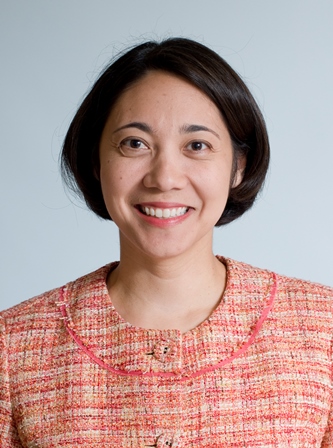 Lecia Sequist, MD, MPH, the Landry Family Associate Professor of Medicine at Harvard Medical School and a thoracic oncologist at the Massachusetts General Hospital Cancer Center as well as a member of the LUNGevity Scientific Advisory Board, is an expert in targeted therapies for lung cancer. Targeted therapies, or drugs that are designed to attack cancer based on the mutations driving cancer growth, are an important treatment option for many lung cancer patients. I recently spoke with Dr. Sequist about the past, the present, and the future of targeted therapies.
Lecia Sequist, MD, MPH, the Landry Family Associate Professor of Medicine at Harvard Medical School and a thoracic oncologist at the Massachusetts General Hospital Cancer Center as well as a member of the LUNGevity Scientific Advisory Board, is an expert in targeted therapies for lung cancer. Targeted therapies, or drugs that are designed to attack cancer based on the mutations driving cancer growth, are an important treatment option for many lung cancer patients. I recently spoke with Dr. Sequist about the past, the present, and the future of targeted therapies.
LUNGevity Foundation: What was one of the most impactful changes for targeted therapies in the past ten years?
Lecia Sequist: Well, I may be a bit biased, but I think the discovery of EGFR mutation-positive cancers was a pivotal event and has completely changed the landscape of lung cancer treatments. I was a trainee when my mentor and team discovered the importance of the EGFR mutation. We ran the first U.S. clinical trial that involved screening for EGFR mutations and tailoring treatment to the genetics of the cancer. The results were favorable, as were other similar studies from around the world, and it was amazing to witness the changes in practice that ensued—it all came about so quickly. For patients, those few years really changed the way we do things today because these advances became a template for the development of other genotype-directed therapeutics. Now we know of several driver mutations and there are corresponding therapies available. We have a clear path forward for researchers to identify additional driver mutations and to quickly develop drugs that target those mutations.
LF: How have targeted treatments changed over the years?
LS: The newest generation of drugs is getting more potent and more specific, and patients now receive serial treatment with multiple different drugs. For example, one specific innovation takes on the problem that as people are living longer with lung cancer, it has been challenging to protect the brain from disease—now there are new targeted drugs that can penetrate into the brain. I think it is a sign that we are getting smarter about personalized therapies.
LF: What do you think is the future for targeted therapies?
LS: I think we need to better understand the heterogeneity of the cancer in more detail. It’s becoming clear that cancer cells can do many different things to try to escape a drug—there can be different subclones within a tumor that use different escape mechanisms. Our approach in the past has been to aim the next drug at one escape mechanism, but we are leaving others untouched. Going forward, we need better technology and modeling to figure out how to keep the various arms of the cancer at bay. We won’t have a simple chart to hold in our hands. It will require working through more complicated algorithms and looking at whole networks within tumors to have the best chance of effectively treating the cancer.
LF: What advice do you have for the next generation of lung cancer oncologists?
LS: Think big and aim for the stars. Even with all the advances in recent years, lung cancer is still a big problem worldwide. It is still the number one cancer killer. So, even as far as we’ve come, we still have a long way left to go. The field of lung cancer research is ready for your creativity and your new ideas. So bring your enthusiasm and let’s continue doing smart research and saving lives.
Juhi Kunde, MA, is a science writer for LUNGevity. 
